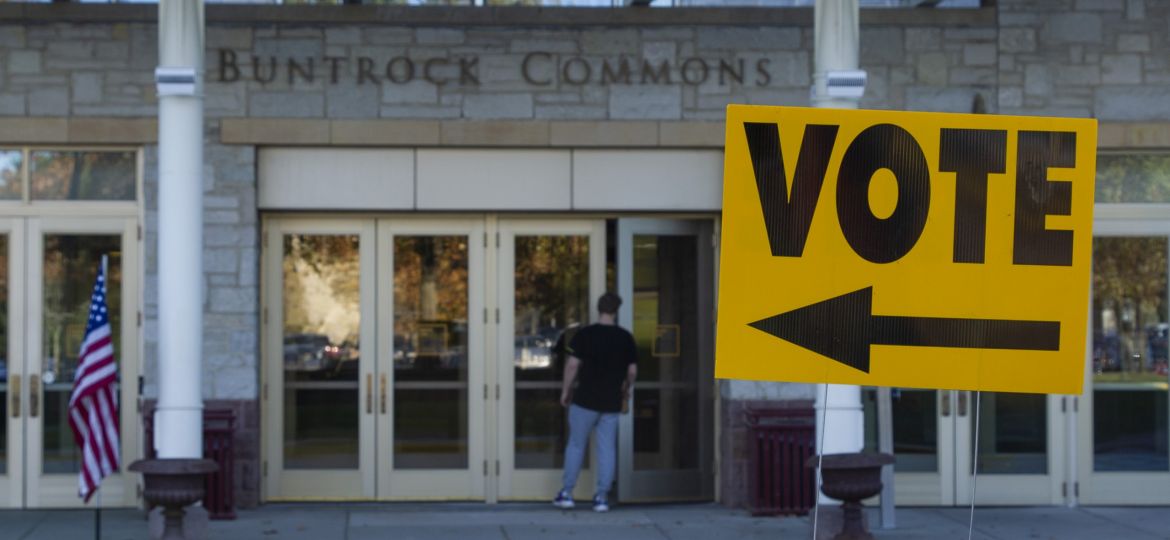
By Jacob Maranda & Claire Drewes
Masked and socially distanced, citizens of Northfield and St. Olaf students alike shuffled into the Pause to cast their votes in the 2020 General Election on Tuesday, Nov. 3, an election that has been like no other in recent history due to the ongoing COVID-19 pandemic. Nov. 3 was the culmination of months of work done by St. Olaf students, staff and faculty to engage voter participation throughout the student body.
Buntrock Commons served as a polling location for Northfield’s Ward 4, Precinct 2, as it has for the previous several election cycles. However, instead of voting taking place in the Black, Gold and Sun Ballrooms, the location shifted into the Pause in order to accomodate the distance needed to vote safely during the pandemic.
Paul Jackson, associate professor of chemistry and environmental studies, worked as a co-lead judge for the Buntrock polling location.
“We’re appreciative of all those people who came to vote today and conducted themselves very well,” Jackson said. “We were prepared for a very large turnout, and we got that right away when the polls opened. After the initial rush, numbers were much slower for the remainder of the day.”
Hannah Liu ’21 and Linnea Cheek ’21, Campus Election Engagement Program (CEEP) Fellows, along with other Election Ambassadors, led the effort to promote on- and off-campus voting turnout.
“The lines were very manageable throughout the day and the polls ran overall very smoothly,” Cheek wrote in an email to The Messenger. “We organized some events that garnered very little interest, and some that were very effective. We hope that our team’s work can transfer into future elections as avenues for getting out the vote.”
To encourage participation, Liu and Cheek opened a “Pledge to Vote” initiative through a Google Form which collected over 1200 responses from students starting Sept. 15 and ending on election day. The form polled students on their voting residence, if they were registered or not, their voting plan, if they had requested a ballot and if they had voted yet or not.
“It was important, I believe, to get people thinking about the election early, since election guidelines and COVID forced us to be more dynamic with our messaging,” Liu wrote in an email to The Messenger.
St. Olaf regularly leads the state, and the nation, as one of the schools with the highest turnout at the polls, often hovering around 60% turnout among eligible student voters. While the COVID-19 pandemic affected on-campus turnout, Liu believes participation by students is on pace to meet historic levels.
“From first glance, it looks as though our school turnout is lower than in 2016 and 2018,” Liu wrote in the email. “However, from the looks of our Pledge to Vote data, we know that a significant proportion of people voted at home by mail instead of on campus, so I do believe that we are on track to have some record breaking turnout.”
Campus engagement, by the numbers:
72%
The percentage of people who voted in both presidential and City Council elections in Ward 4, Precinct 2, up from 27% in 2016.
1203
The number of St. Olaf students who responded to the CEEP “Pledge to Vote” survey, which was originally sent to students on Sept. 15 and closed on election day.
68.78%
The percentage of students who responded to the “Pledge to Vote” survey saying they would vote by mail, as opposed to in person on election day and early in person.
Numbers provided by Hannah Liu ’21, Campus Election Engagement Program Fellow, sourced from survey and Minnesota Secretary of State website.















